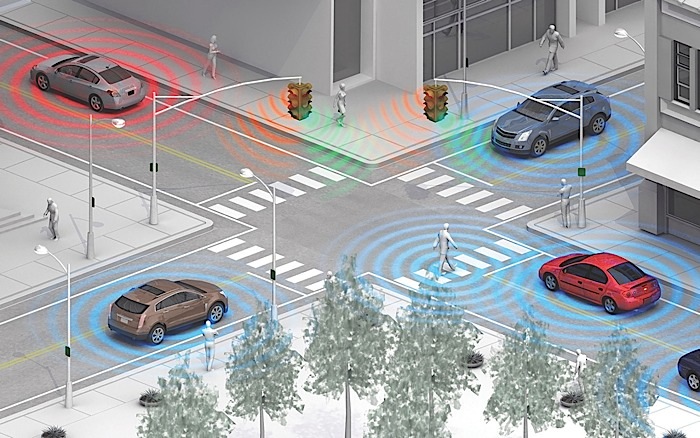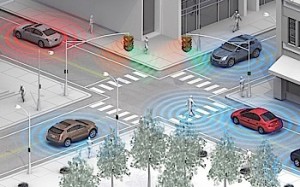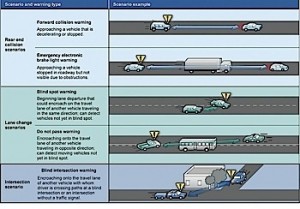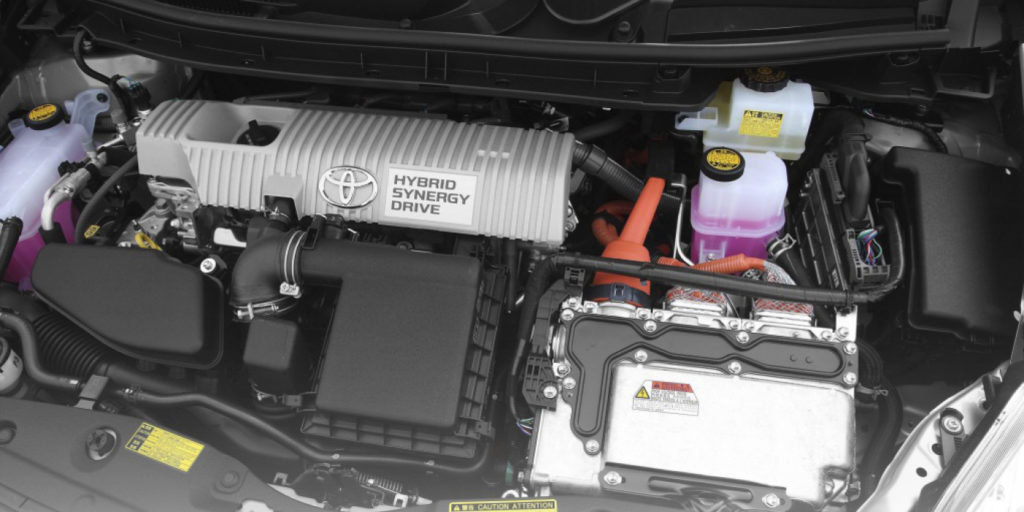How Technology is Enhancing Vehicle Communication With The Connected Vehicle
Connected vehicles have been with us since 1996 when GM introduced OnStar. This first-generation connected vehicle system pioneered the way for similar systems that were to follow. OnStar offered hands-free cell phone calling, GPS navigation, the ability to monitor vehicle systems for potential problems and to summon help in the event of a breakdown or accident. Since those early days, most import and domestic automakers have jumped onto the connected vehicle bandwagon and now offer some type of onboard cell phone, navigation and infotainment connectivity package.
The availability of various connectivity packages in current models ranges from 8% up to 100%. Examples include BMW’s “iDrive,” which first appeared back in 2001 on 7 Series models and is now available on all of its models, and Volkswagen’s “Car-Net” system that is currently available on most 2015 and 2016 models. Other connected vehicle systems with similar capabilities include Audi’s MMI (Multi-Media Interface) system and the COMAND (Cockpit Management and Data System) in various Mercedes-Benz models.
Having a connected vehicle has become an important factor for many consumers when it comes to making a car-buying decision. Hands-free connectivity that eliminates the need to look at and tap a small screen on a cell phone while driving is intended to improve safety. Distracted driving has become a major problem in spite of laws that many states have that prohibit texting while driving. So, automakers and legislators continue to struggle with what type of human-machine interface provides the best and safest driving experience with the least amount of distraction and confusion.
The Next Big Thing in Connectivity
Connected vehicles have been evolving rapidly in recent years, and what’s coming next will blow you away. Various driver-assistance systems such as adaptive cruise control, lane departure warning, blind spot warning, backup cameras, parking assist, collision avoidance warning and even automatic braking are currently available on a growing number of makes and models, either as standard equipment or as an optional technology package.
Automakers are trying to make driving safer by incorporating more and more of these high-tech safety features into their connected vehicles. It’s a necessary preliminary step toward the inevitable introduction of autonomous self-driving vehicles.
Google, Volvo, Audi and others have been developing the technology that will make autonomous driving possible. This has been going on for years, and has reached the point where there is very little standing in the way of full-scale adoption (legal issues aside). A self-driving Audi Q5 SUV recently completed a trip from New York to San Francisco (3,400 miles) on autopilot for 99 % of the journey. Its human passenger assumed the controls in only a couple of places where construction zones may have created some navigation issues (things like poorly marked lanes).
There remains one more piece of the technology puzzle that has to fit into place before automakers give the green light to mass-produce self-driving cars — connecting vehicles to each other and the world around them.
V2V Communication
The next wave of evolution with the connected vehicle is Vehicle-to-Vehicle (V2V) communication. Basically, V2V enables vehicle communication — in other words, connected vehicles that can communicate automatically with every other vehicle in the immediate vicinity. This type of vehicle communication makes the car aware of what nearby vehicles are doing, including braking, stopping, accelerating and turning patterns.
V2V allows a vehicle to detect other vehicles around blind corners to reduce the risk of blind corner accidents. This vehicle communication also allows a vehicle to react to sudden braking in heavy traffic, even if the connected vehicle that’s slamming on its brakes is several vehicles ahead or is obscured by a large truck. V2V also allows vehicles to react to changing weather conditions, such as slick roads, by sensing how other nearby connected vehicles are slowing as they encounter wet or slick road conditions.
According to a report issued in August 2014 by the National Highway Traffic Safety Administration (NHTSA) titled Vehicle-to-Vehicle Communications: Readiness of V2V Technology for Application, the large-scale adoption of V2V technology has the potential to reduce traffic accidents and deaths up to 80%!
NHTSA says V2V communication could save the lives of up to 27,000 people who would otherwise be victims of auto accidents. Injuries could also be dramatically reduced by up to 1.8 million a year, and losses from collision damage could be slashed by hundreds of millions of dollars! The stakes are huge when it comes to these advancements in vehicle communication, and the potential rewards are many.
Most auto accidents are the result of human error, which includes drunk and distracted driving, falling asleep at the wheel, speeding, improper lane usage, violating traffic laws, and the like. V2V can potentially eliminate many of these causes of accidents by communicating with other vehicles and taking the necessary preventive or corrective actions (such as automatic braking) to prevent a collision from happening. Finally, V2V is unaffected by weather, so even in inclement conditions, the V2V won’t cut out like your TV in a bad storm.
Vehicle Communication Standards
For V2V to function as intended, connected vehicles must have a standard vehicle communication protocol. SAE J2735 has already defined the standard for what type of “Basic Safety Message” (BSM) that V2V vehicles will broadcast to each other.
The BSM signal is essentially a coded text message that indicates the vehicle’s position based on its internal GPS location, speed, direction, braking status and size (car, light truck or heavy-duty truck). If another connected vehicle requests additional information, a “part 2” BSM message can be sent that includes more detailed data such as the status of the ABS, traction control and stability control systems (engaged or not); the status of the windshield wipers and lights (on or off), turn-signal indicators (turning right or left), and hazard flashers; if the airbag has deployed (accident status) and even tire pressure (flat tire detection). This allows one connected vehicle to determine if another vehicle has stopped or broken down on the side of the road so it can change lanes and/or reduce speed to avoid that vehicle.
V2V will have a vehicle communication range of up to 300 meters (the length of more than three football fields), 60 degrees around the vehicle. It will use DSRC (Dedicated Short Range Communication) radio signals in the 5.85 to 5.925 GHz frequency band. Within this band will be a number of dedicated channels for various vehicle communication functions.
One of the requirements of V2V communication is that the system has to be able to have vehicle communication with as many as 200 nearby vehicles and keep them all straight as to their relative positions, directions and speed. It’s no easy task, but with today’s fast processors, the basic safety messages can be broadcast, received and processed in a split second.
V2V’s main drawback is that to make a significant dent in reducing accidents (pardon the pun), other vehicles also have to be equipped with the same vehicle communication system. That is not a requirement with current active safety systems that use radar, lidar and cameras for lane departure warning, blind spot detection, collision avoidance and automatic braking. Also, V2V may not work as well in tunnels or in “urban canyons” that may hinder short-range radio communications.
NHTSA is currently developing a timeline for when V2V communication will be required on new vehicles. Although no rules have been announced as of this writing, at least one automaker (GM) has said it will begin incorporating V2V into some of its 2017 model-year connected vehicles.
The goal of V2V communication is to reach 85% penetration of on-road vehicles as quickly as possible — a process that will obviously take many years, considering that the average vehicle today is nearly 12 years old. But, look how quickly airbags, antilock brakes, TPMS and OBD-II have become standard on today’s vehicles. Millions of late-model vehicles already have some type of basic connected vehicle capabilities (cell phone, onboard navigation and/or infotainment), and those numbers are expected to grow rapidly as consumers expect some type of basic connectivity to be available as standard or optional equipment.
V2V is just another layer of connectivity, although it will be one that is not as obvious to most motorists as what’s available now. NHTSA estimates V2V communication will add $250 to $300 to the cost of the average vehicle when it is fully adopted.
Connected Vehicle Security Concerns
As with all forms of Wi-Fi communication, vehicle hacking is a serious concern. To reduce the risk of being hacked, V2V will employ several layers of security protection. The goal is to make sure the information a V2V-equipped connected vehicle receives is from a “trusted source” (another vehicle), and not some hacker broadcasting bogus signals.
The basic safety messages that V2V broadcasts and receives use digital signatures similar to the security certificates that your computer or smartphone looks for when you visit a website. If the V2V message has an invalid or expired certificate, the information is rejected. Any additional system data that is communicated will be further protected by asymmetric encryption, and it will be “anonymized” so that outsiders can’t tell which vehicle the data is actually coming from. SAE is currently developing a standard (J-2945-1) that details all of the connected vehicle performance requirements and security measures that will be required for V2V communications.
V2I Communication
The second part of V2V communication is “Vehicle-to-Infrastructure” (V2I) communication. This allows connected vehicles to communicate and interact with traffic control systems, such as smart traffic lights and speed transducers. This aspect of vehicle communication allows for better real-time traffic monitoring and management. This vehicle communication may also open the door for other types of roadside communication, such as commercial advertising, vehicle-use monitoring (which some insurance companies offer now via an OBD plug-in device for reduced auto insurance rates), automatic toll collections, and even remote servicing and updating of onboard vehicle software.
Tesla was the first automaker to offer automatic Wi-Fi updates on its connected vehicles, similar to the never-ending security updates Windows PC users have to put up with every time they start their PCs. With most other vehicles, a required software update to correct or prevent a driveability or emissions problem has to be installed manually with a scan tool or J-2534 pass-through tool.
Once vehicles have V2I as standard equipment (or their own dedicated IP Internet address and Wi-Fi connection), many software updates and other vehicle communication may be sent directly to the vehicle seamlessly via its Internet connection. That’s good news for consumers because it eliminates the need to schedule a service appointment for a software reflash. But, it’s bad news for shops that would otherwise perform a PCM reflash procedure manually.
What Does The New Age of Vehicle Communication Mean For You?
New “disruptive technologies” such as V2V and V2I can, and will, have far-reaching consequences on the automotive world as we know it. These types of vehicle communication will raise safety to a much higher level than is currently possible with today’s active safety and driver-assistance connected vehicle technologies. These technologies will also help usher in the era of the autonomous vehicle by adding the final piece of the puzzle that is needed for safe, reliable autonomous driving.
This future technology will also have a huge impact (pardon the pun again) on the collision repair industry by significantly reducing the number of accidents that occur every year.
V2I communication and Internet connectivity should also allow better monitoring of vehicle emissions, which could eliminate the need for periodic emissions testing. It could also alert motorists when their vehicles are polluting, so they can have the necessary repairs made. Data collected from connected vehicles, such as miles driven, speed, etc., could also be analyzed to predict component wear (such as brake linings, tires, etc.). Then, service alerts can be sent based on actual vehicle usage and driving habits rather than a printed service schedule in the owner’s manual.
When automakers start to incorporate V2V and V2I into their new models in the next couple of years, any repairs that are related to these vehicle communication systems will likely be “dealer-only” during the warranty period. Whether these systems will be covered under some type of special extended warranty, or only the standard “bumper-to-bumper” warranty, remains to be seen. But, sooner or later, the aftermarket service industry will have to get up to speed on the new connected vehicle technology. Repair opportunities will likely revolve around vehicle communication issues (bad V2V/V2I transponders/receivers); software issues (if upgrades cannot be installed automatically); and defective modules.
One long-range issue of V2V/V2I communication that has yet to be addressed is what happens as this future technology continues to evolve? Many cars typically outlast the communication/infotainment technology that is built into them. As things change over time, it’s possible that V2V/V2I communication may also become obsolete or require some type of updating (software and/or hardware). So, this may create additional service opportunities as these next-generation connected vehicles age.
It’s hard to predict how quickly V2V/V2I will be adopted or where it will take us, but if this new age of vehicle communication lives up to its promise, it will certainly change the automotive landscape forever.
















